The three pictures below show the prep work for the scarf. It's already tea and turmeric stained. Now I fold it and press it, to make creases. I do this so I can draw on a folded surface, and then mirror the image to the other folds. Note the work surface covered by a plastic bag.
The opium poppy, red with a black center, has famously been used as a symbol of WWI remembrance, and in the US at least (possibly other places, but I don't know) as a symbol of support for war veterans generally. If you give your pennies to the VFW, they give you a tiny cloth poppy to say thanks. The California Poppy (Eschscholzia californica) comes from the same family (Papaveraceae) but different genus (Eschscholzia). It doesn't contain opium. It's native to the Unites States and Mexico, and is most famously a beautiful yellow, though it also comes in white, pink, and red varieties. Its center is much less showy than the bold black center of an opium poppy. For this project, I choose to draw California poppies because they are all over my yard. The ones in my yard are yellow, but I opt to draw a reddish variety, because the scarf is already stained yellow, and I want higher contrast with the flowers.
When it's finished, I love the poppy scarf! It has a folk-art feel to it, but I don't know which folk tradition it looks like. Maybe Os or Rogaland rosemåling? It's much more detailed and finicky than rosemåling, but has the symmetrical floral motifs that characterize some of those Nordic works. Rosemåling cum pointillism, ha ha!
1 Comment
The Sister
10/17/2022 03:03:30 pm
I love the details you've added, in how it's almost symmetrical but then little sections have variants. The bright colors are very cheerful, too. Good job!
Reply
Leave a Reply. |
Karen Roy
Quilting, dressmaking, and history plied with the needle... Sites I EnjoyThe Quilt Index Categories
All
Archives
March 2024
|
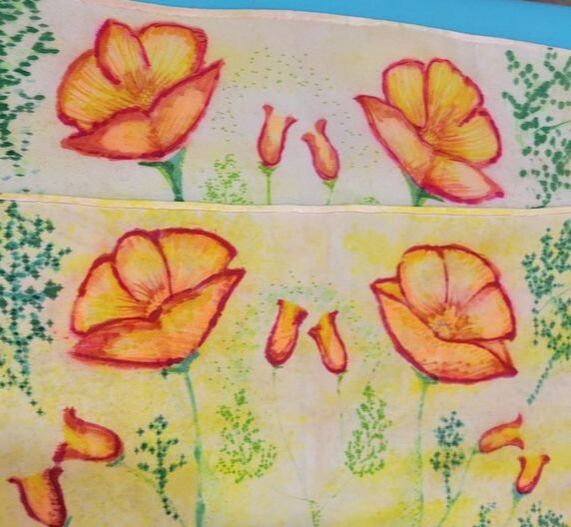
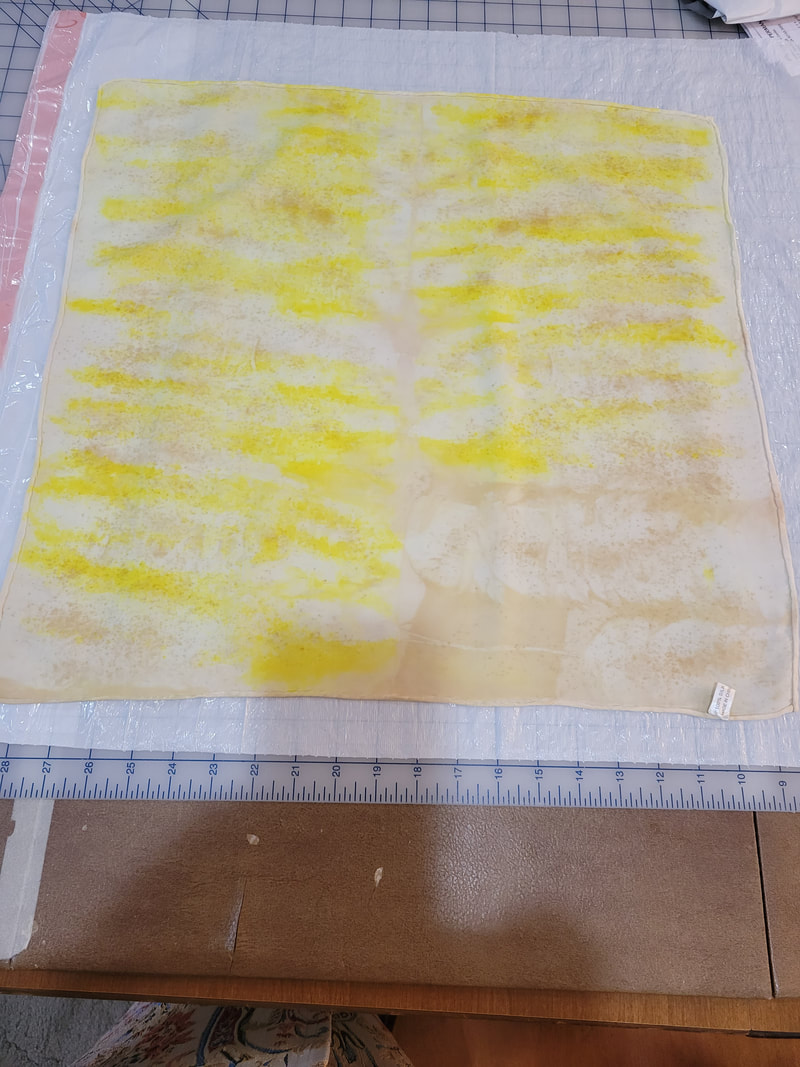
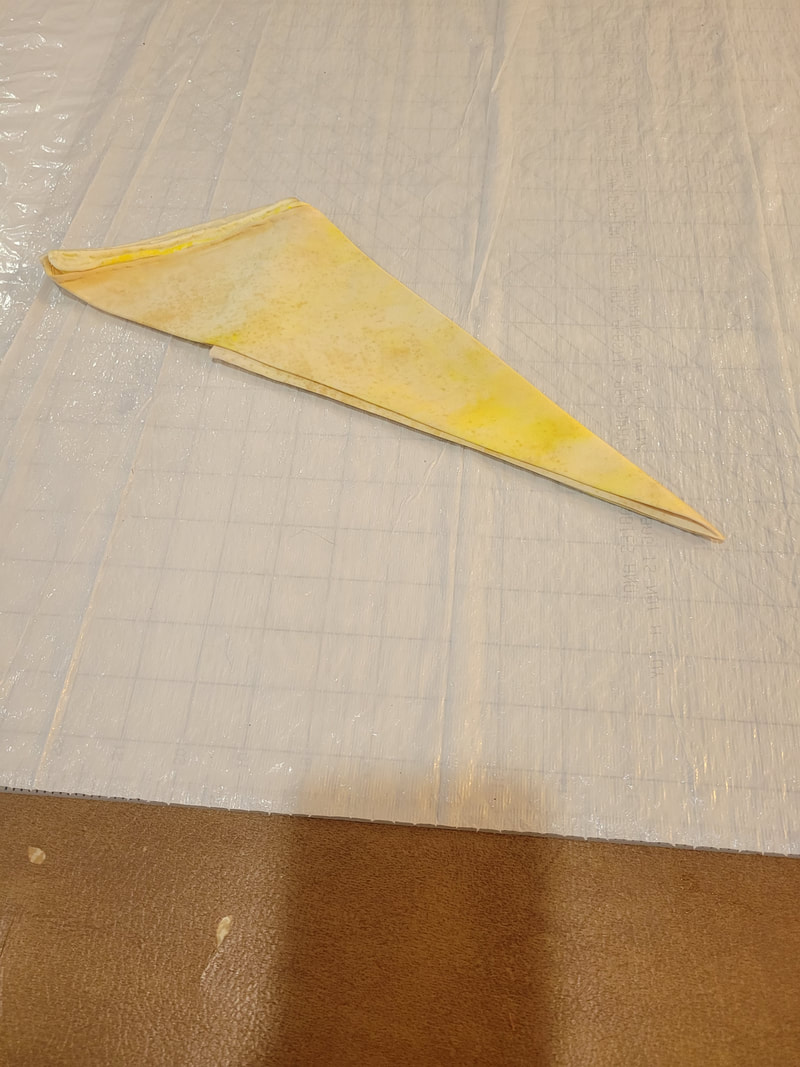
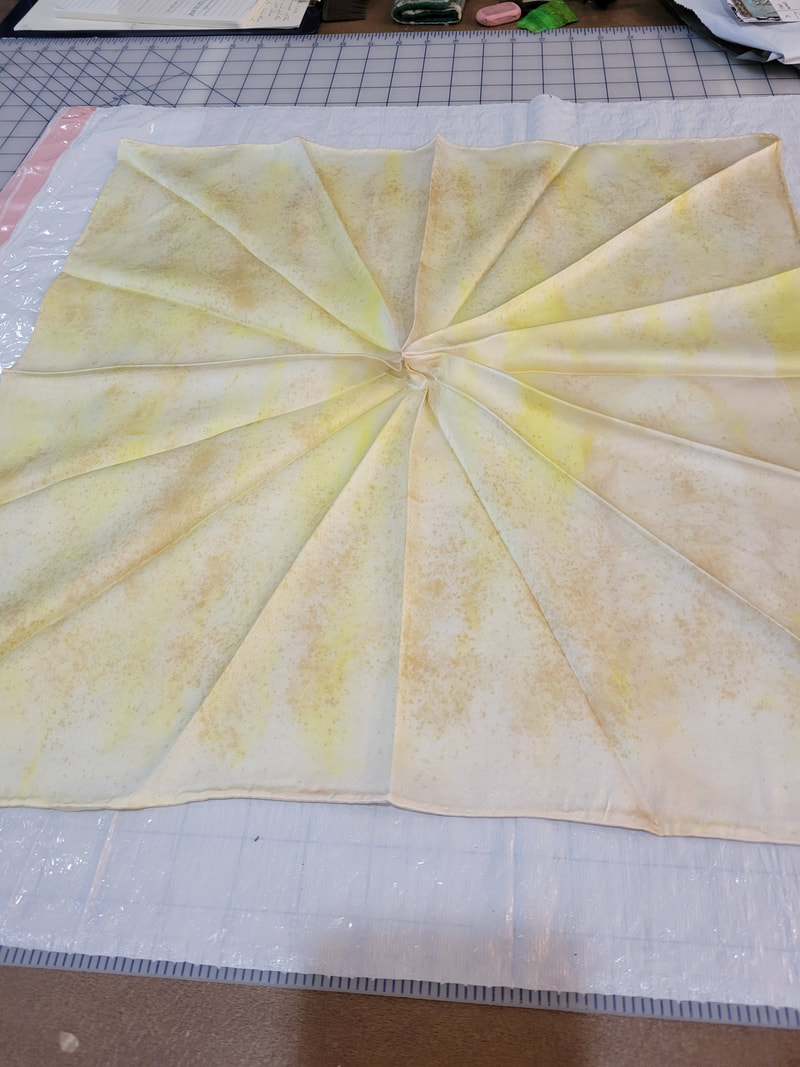
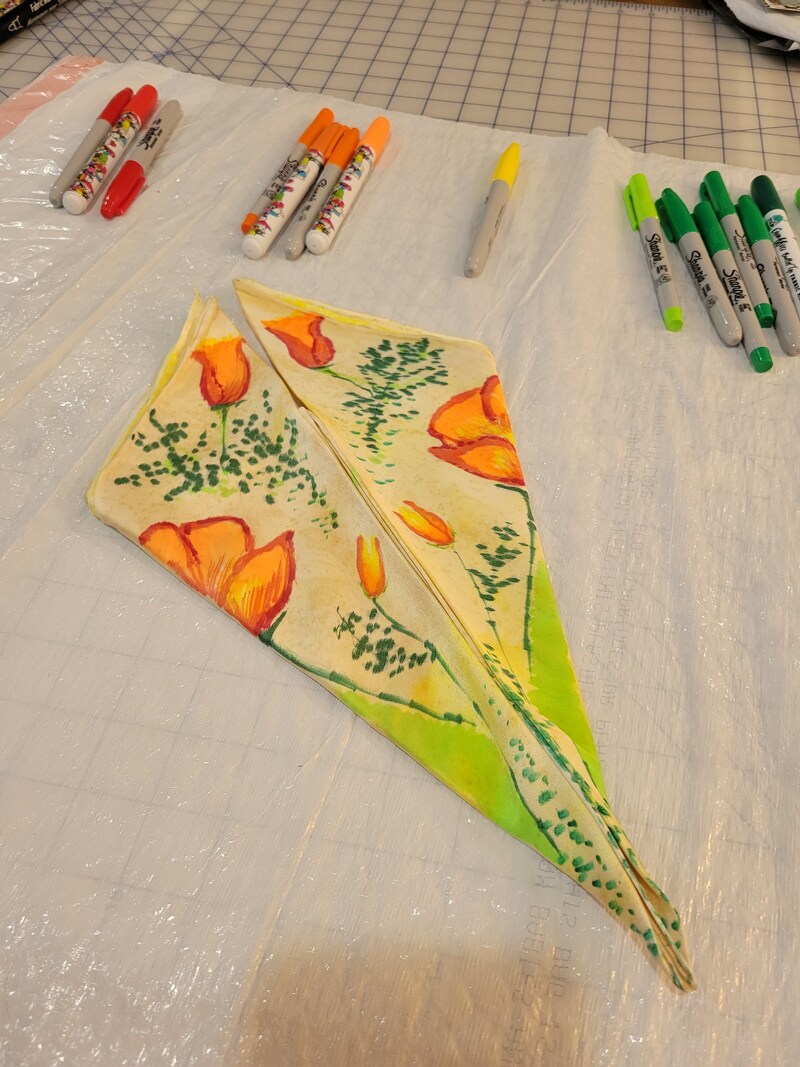
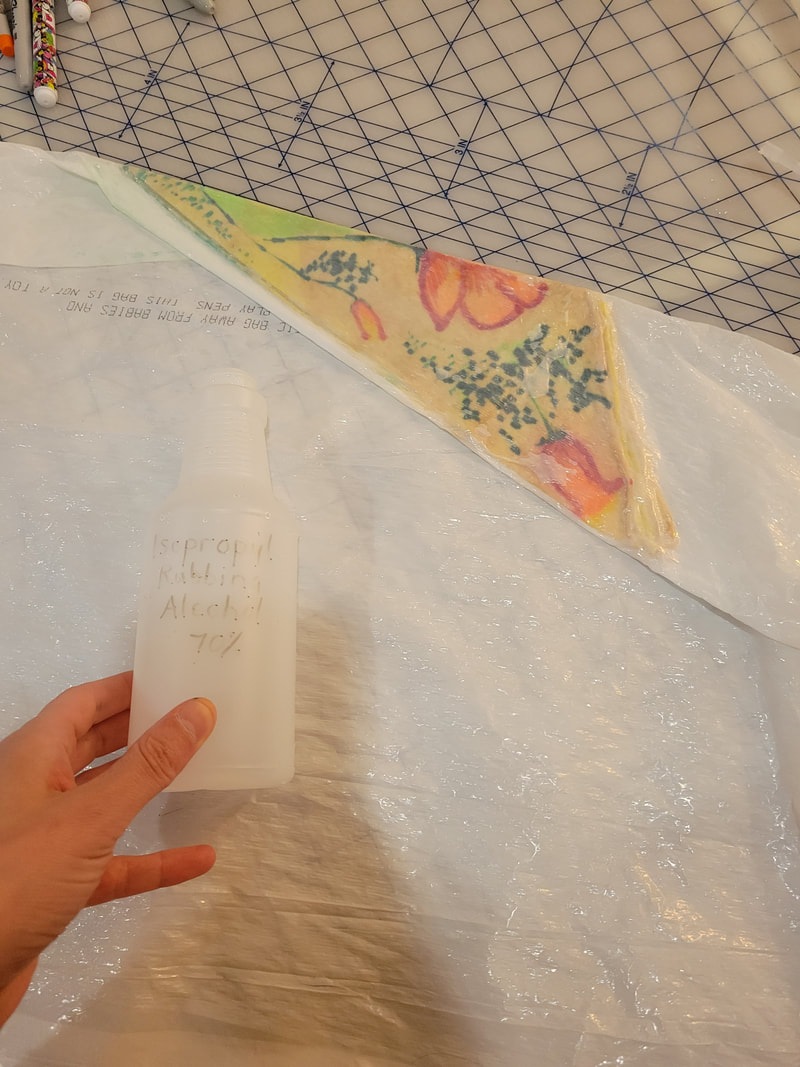
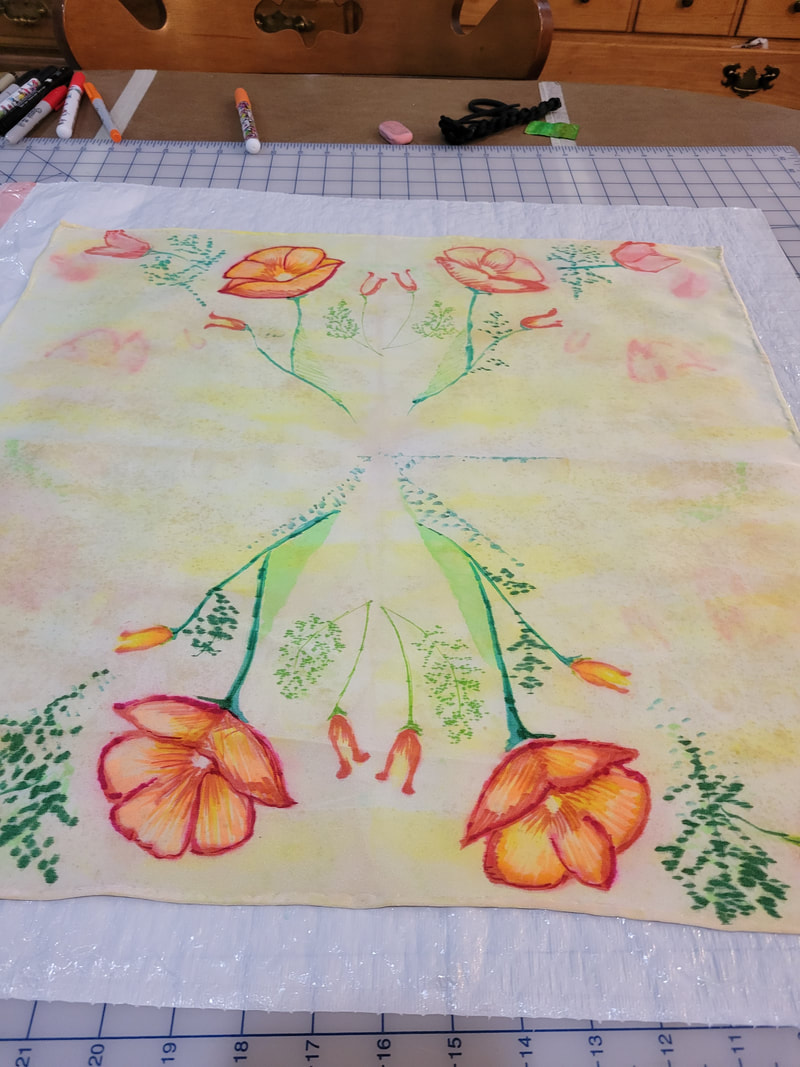
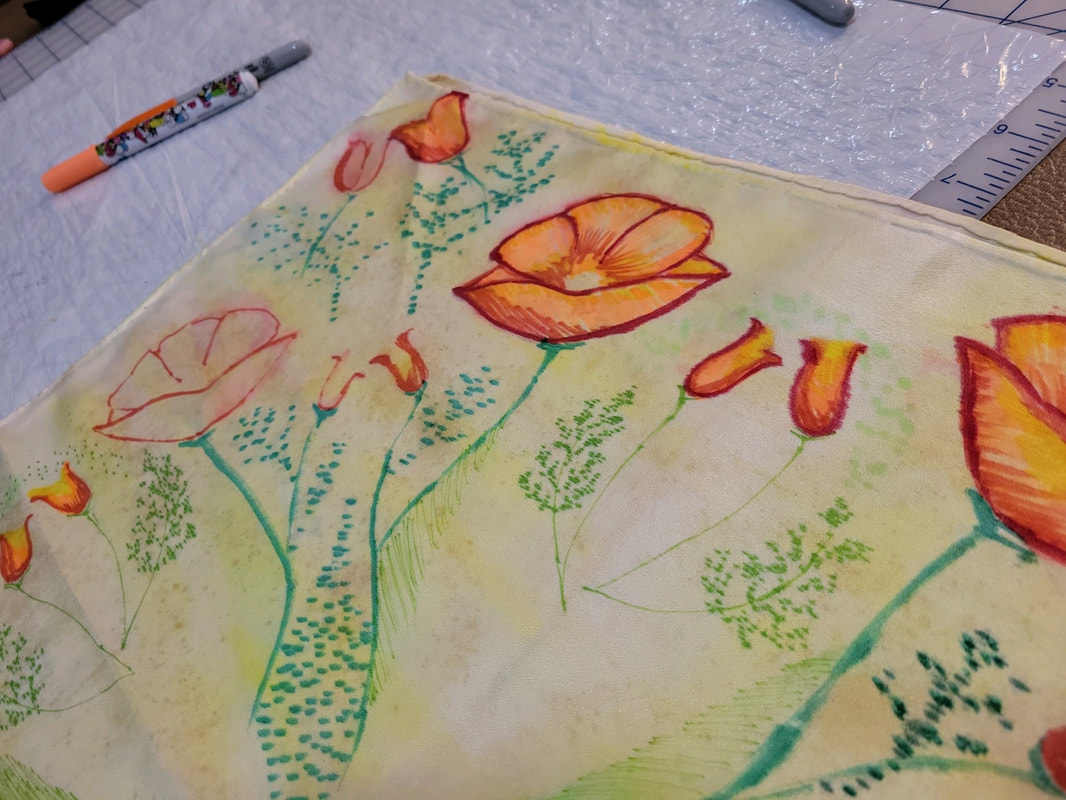
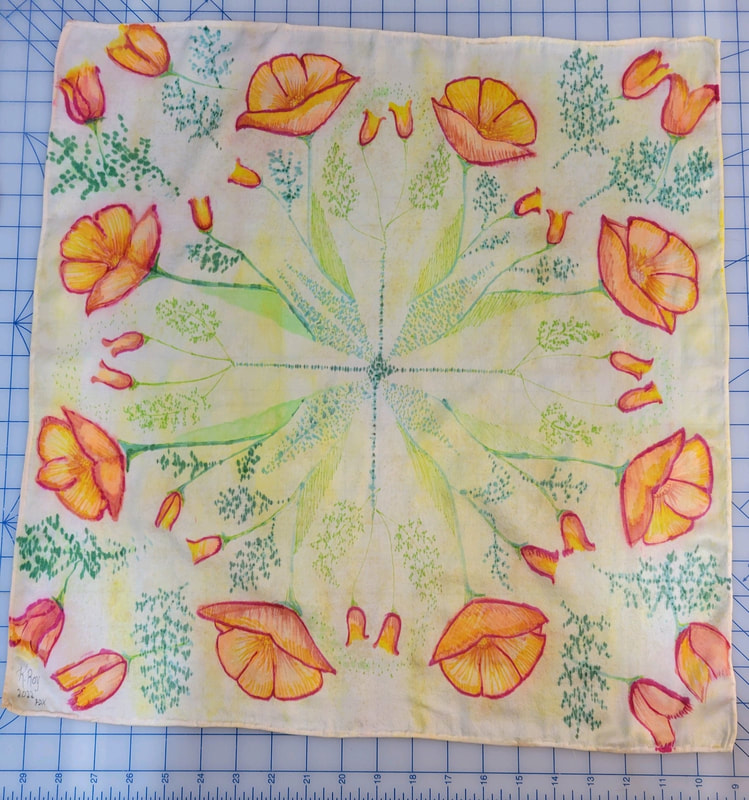
 RSS Feed
RSS Feed